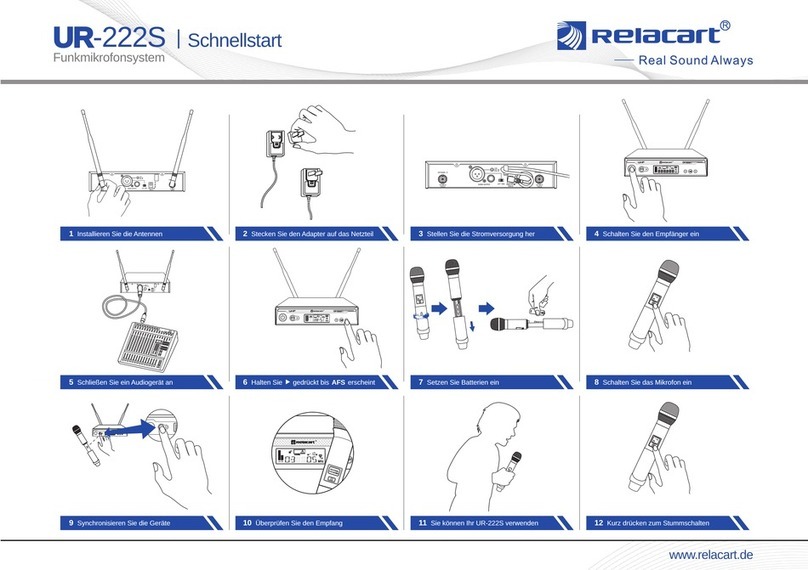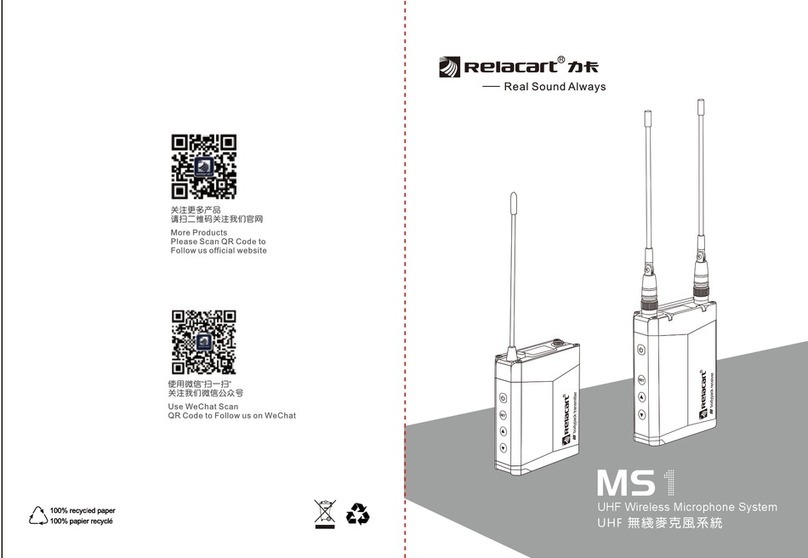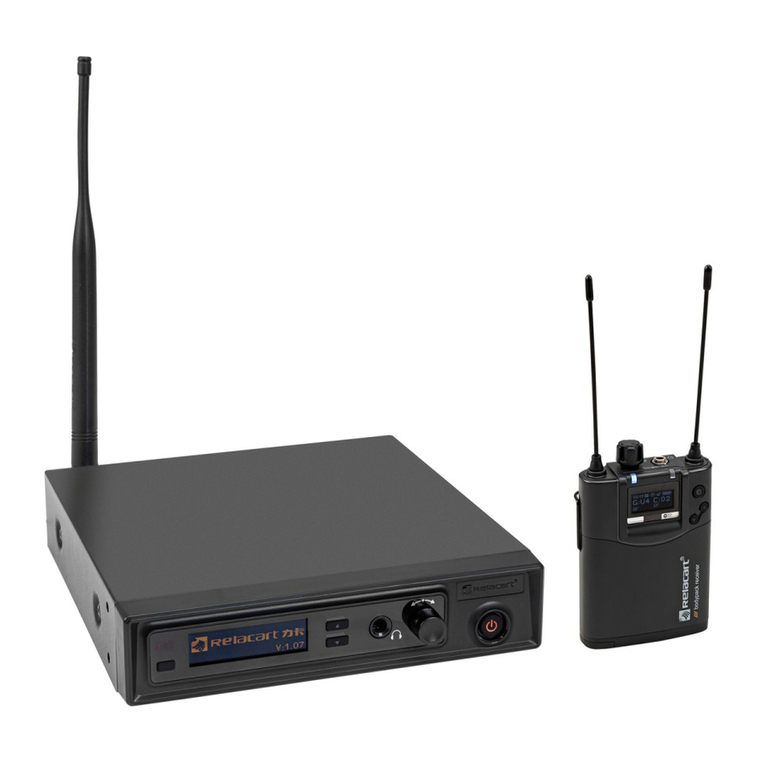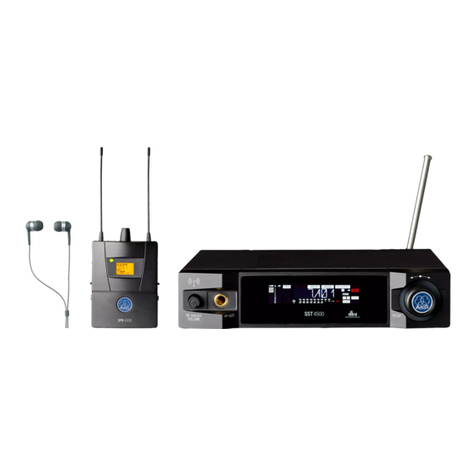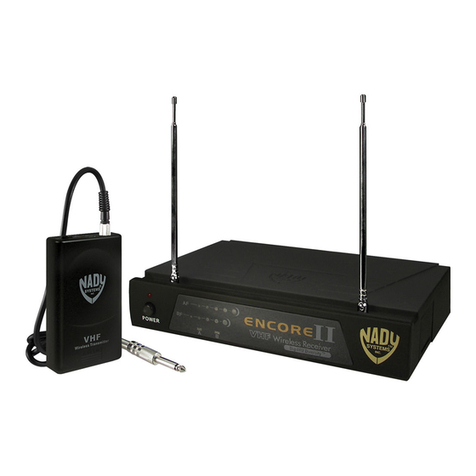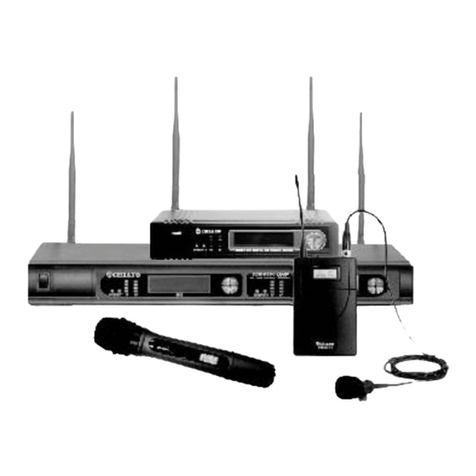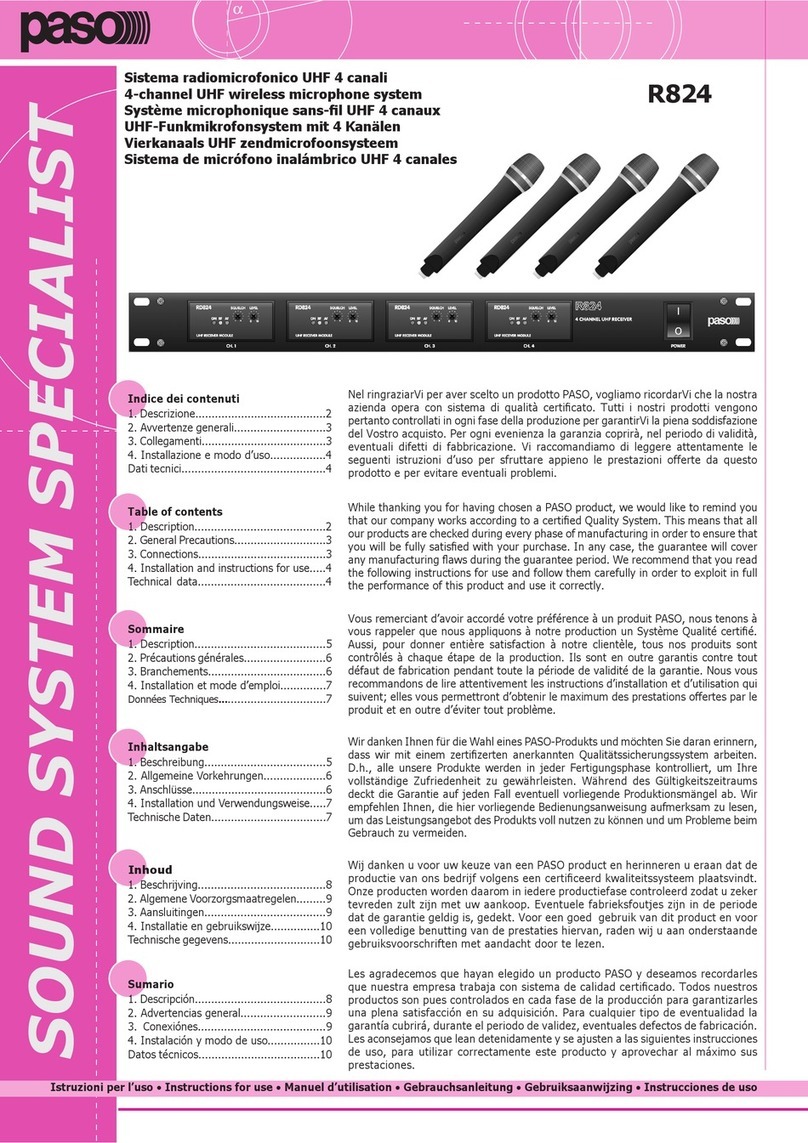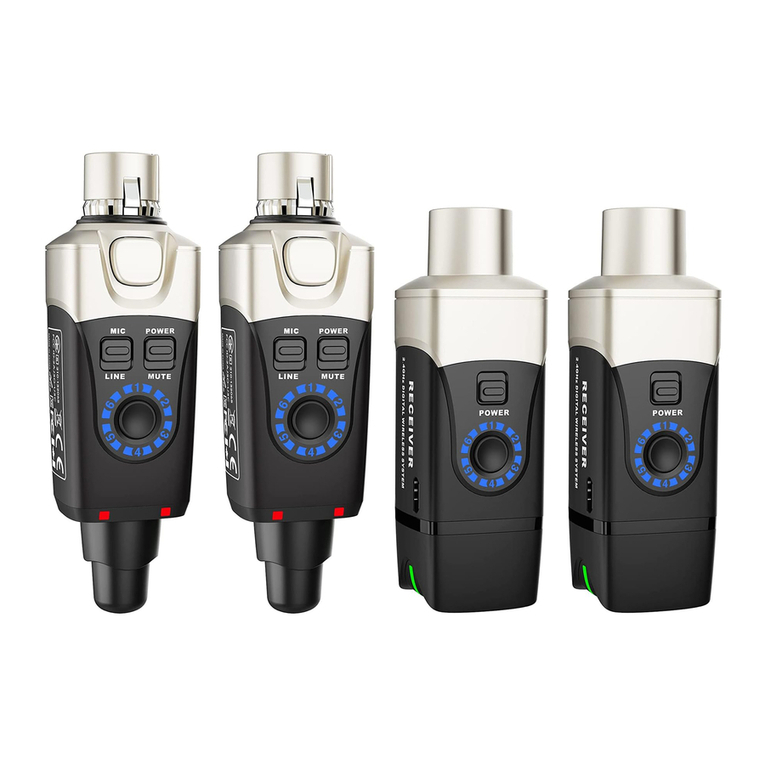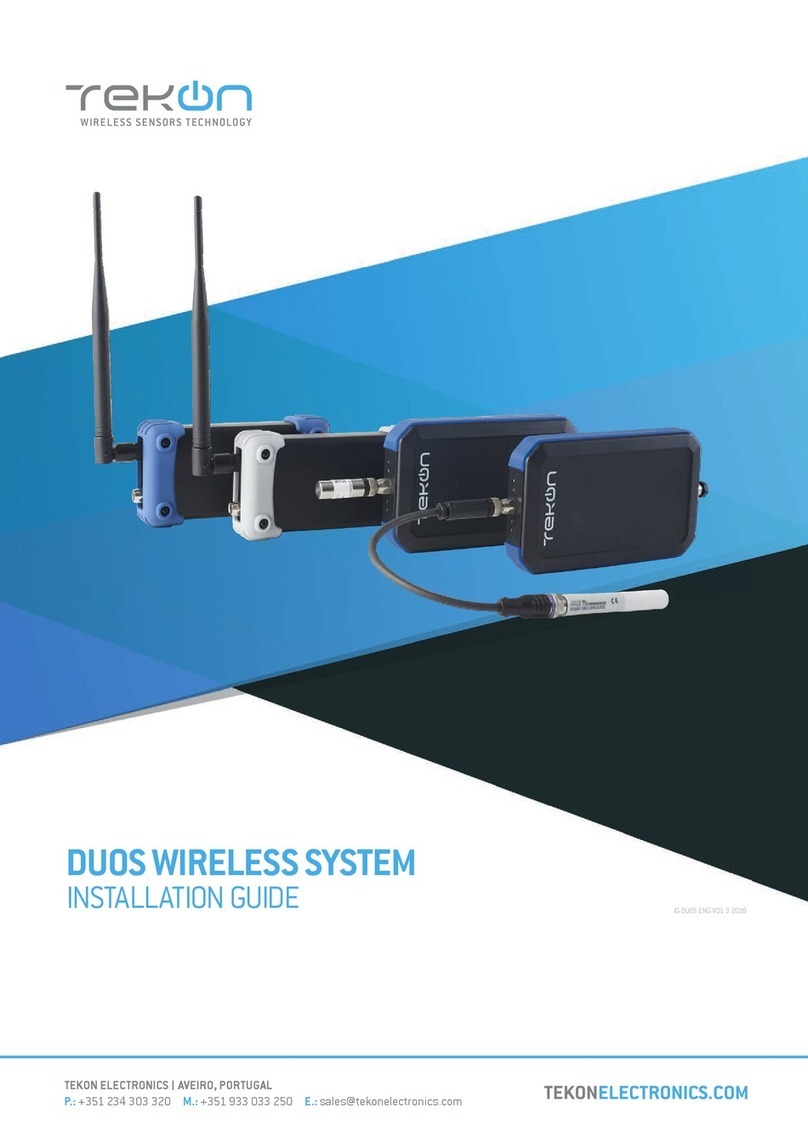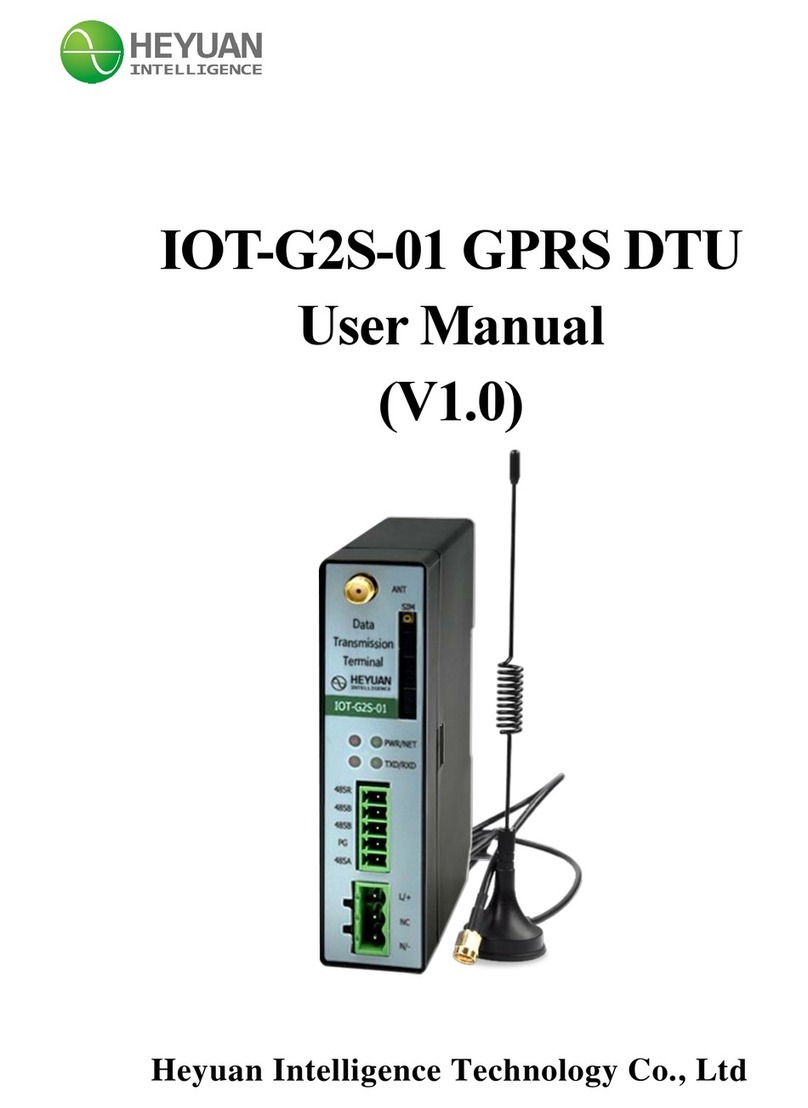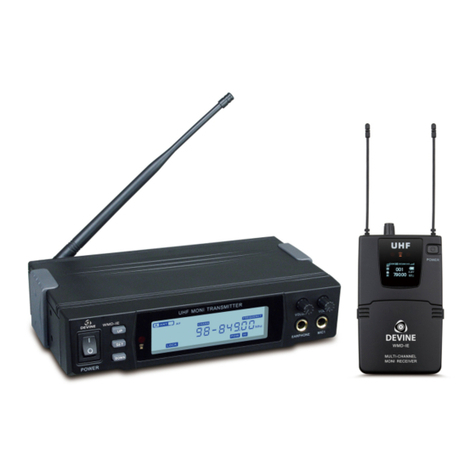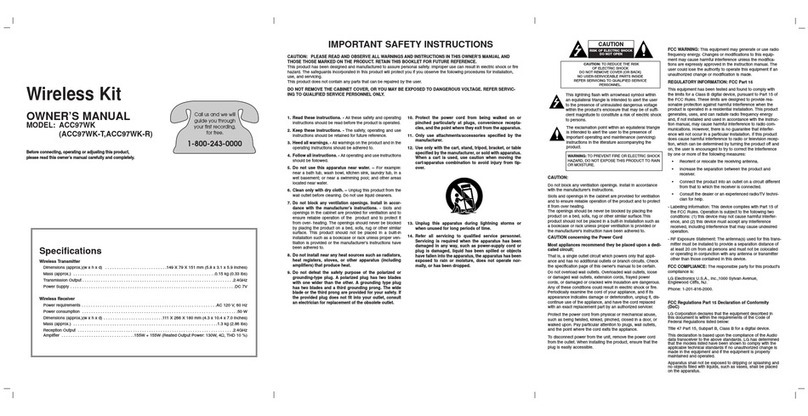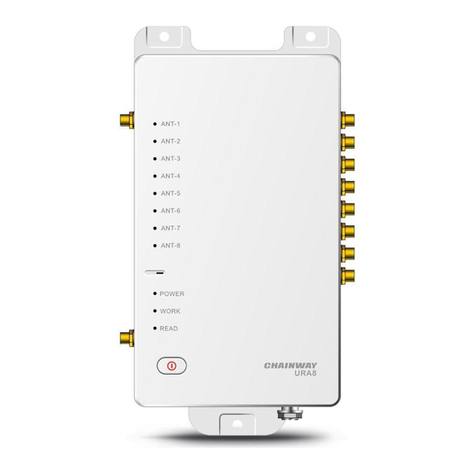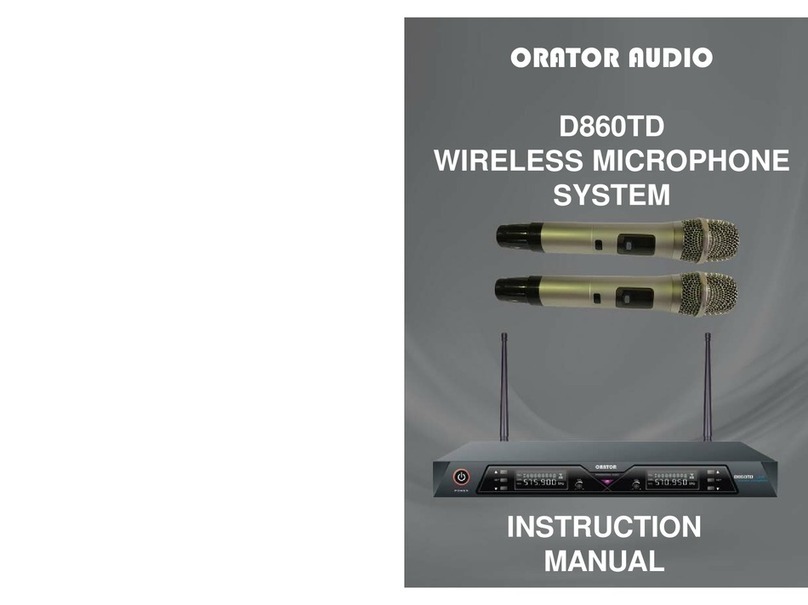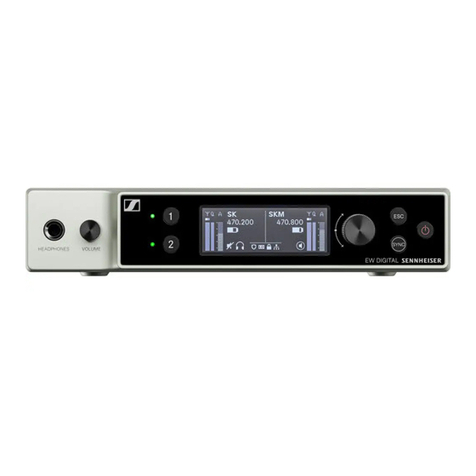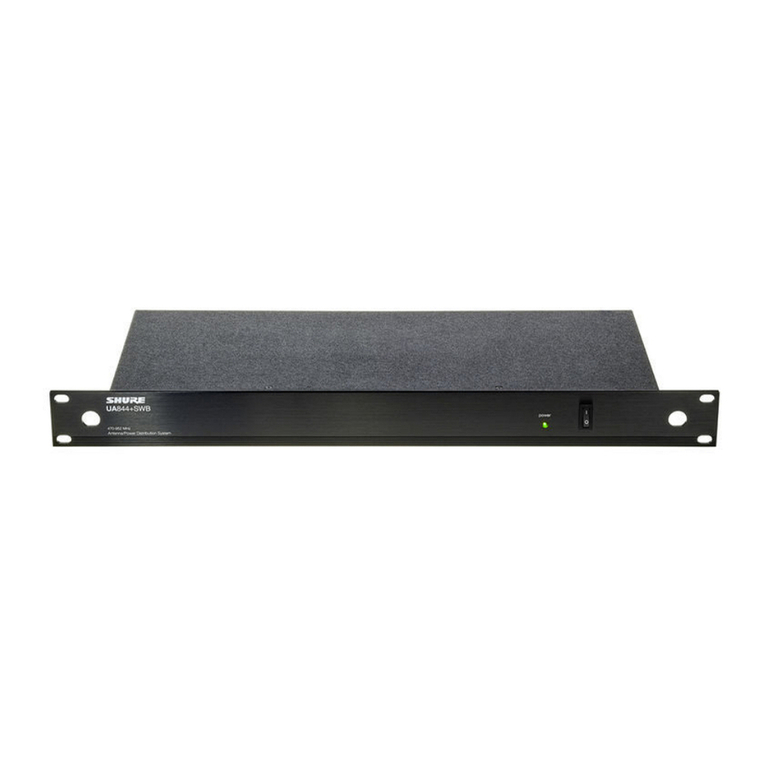UB-200 Semi-cardioid Condenser Wireless Boundary Microphone
06
①Power Button
a)Power Supply Button: Press power button in 3 seconds to turn on power and the indicator light turns into
green, 3 seconds to turn off the power.
b)Mute Button: Once the power is ON, press this button 1 second, it will be mute, and LCD screen display
“MUTE” , you will also find the indicator light turns into orange. Press 1 second more to eliminate “ Mute”
function, letter “MUTE” disappear on the LCD screen, indicator light is back to green.
②LCD Window: Liquid crystal display indicates operational frequency / channel, mute, lock status and
battery condition. The transmitter's “fuel gauge” battery indicator displays a maximum of 4 bar segments.
When it leaves 1 bar segment, the batteries should be replaced immediately to ensure continued operation.
③Infrared Data Receiving Window (iR): Use to receive the data signal from the receiver.
④Battery Door Switch: Open the battery door by sliding the switch.
⑤Battery Compartment: Insert 2 fresh 1.5V AA batteries. (Alkaline type is recommended, always replace
both batteries.)
Warn: Observe correct polarity as marked inside the battery compartment to avoid damage to the internal
electric parts.
Product Features:
·UHF band 490 – 860MHz wireless boundary microphone.
·Bright and easy-to-read LCD display shows operating channel / frequency, battery level, mute and
other working status.
·Semi-cardioid polar pattern.
·Ultra-quiet electronic switch can be set to any of three operating modes: "touch on / touch off”,
"touch-to-talk" and "touch-to-mute" (only cooperates with wireless receiver UR-220D & UR-220S).
·RFI-shielding technology offers rejection of radio frequency interference (RFI).
·Permit angle of acceptance 120°.
·The microphone switch can control or be controlled by external automatic central control system or
other devices.
·Superior off-axis rejection for maximum gain before feedback.
·Heavy die-cast case and non-slip silicon foam bottom pads minimize coupling of surface vibration to
the microphone.
·Battery operation of max. 10 hours.
·Designed for surface-mount applications such as high-quality sound reinforcement, professional
recording, television, conferencing and other demanding sound pickup situations.
·UB-200 can cooperate with RELACART digital and wireless automatic mixer WAM-400, wireless
receiver UR-220D or UR-220S.



